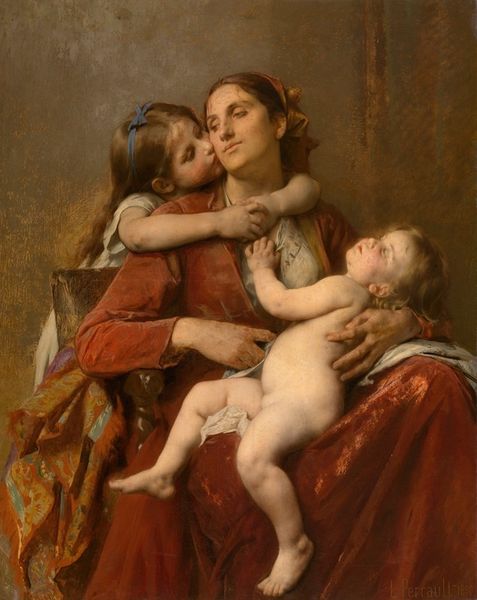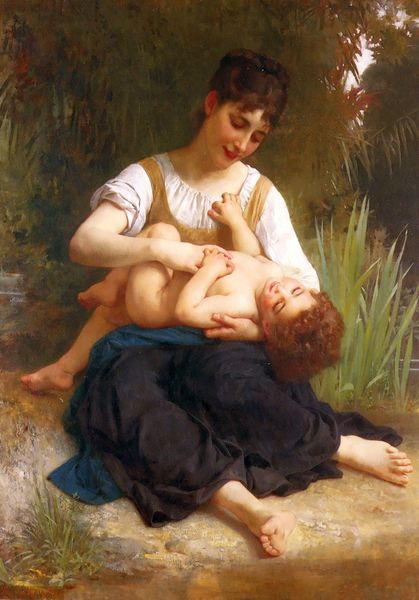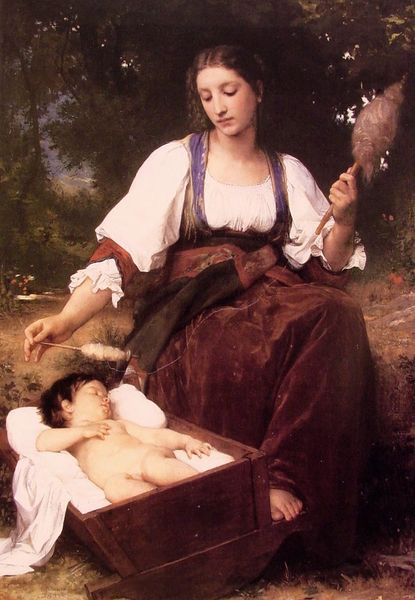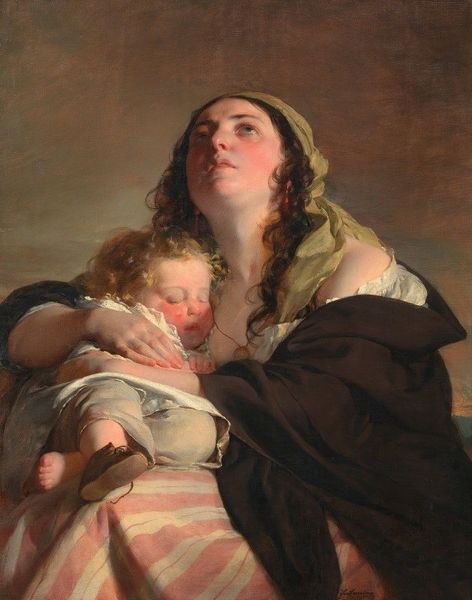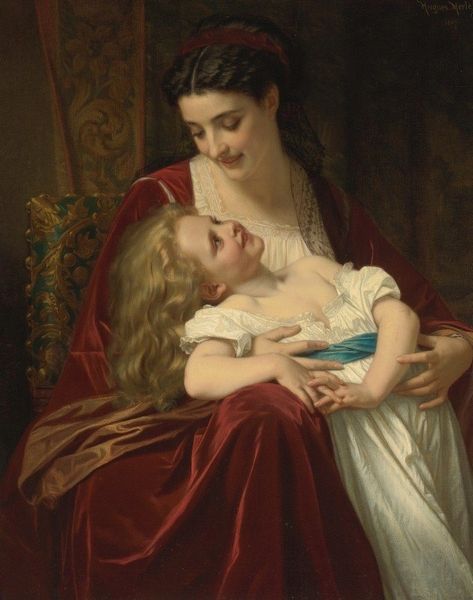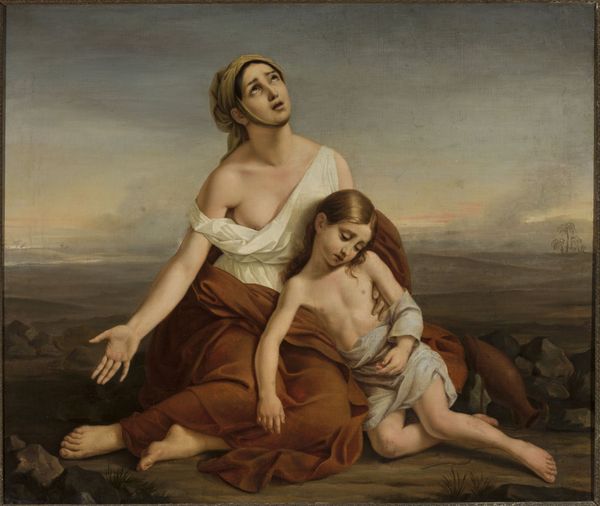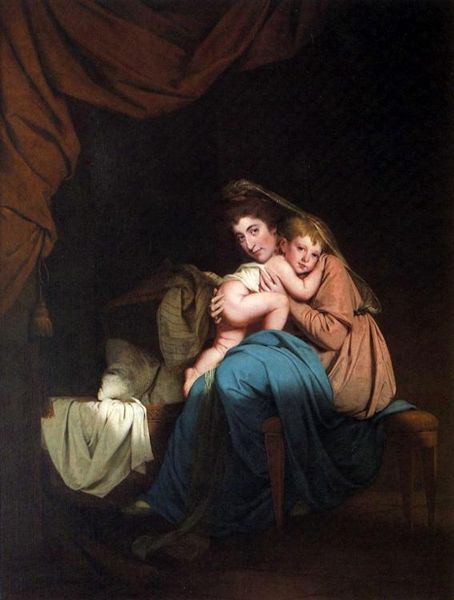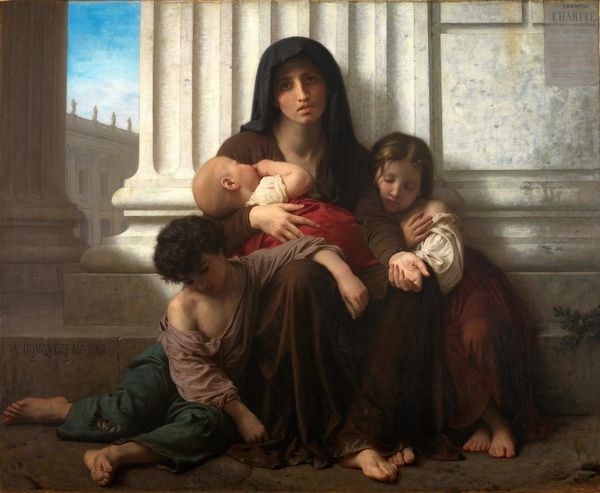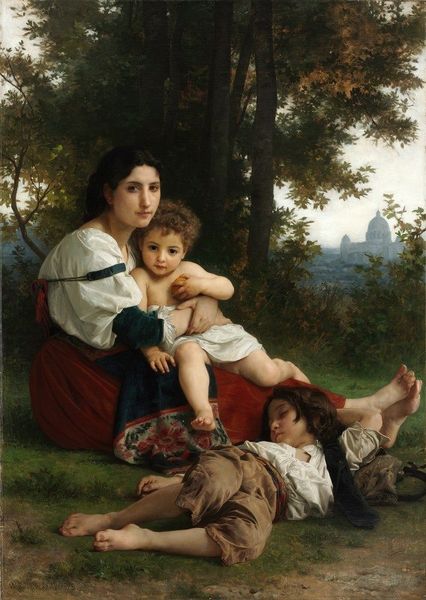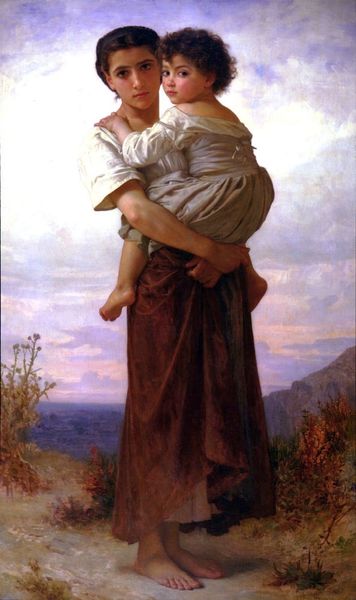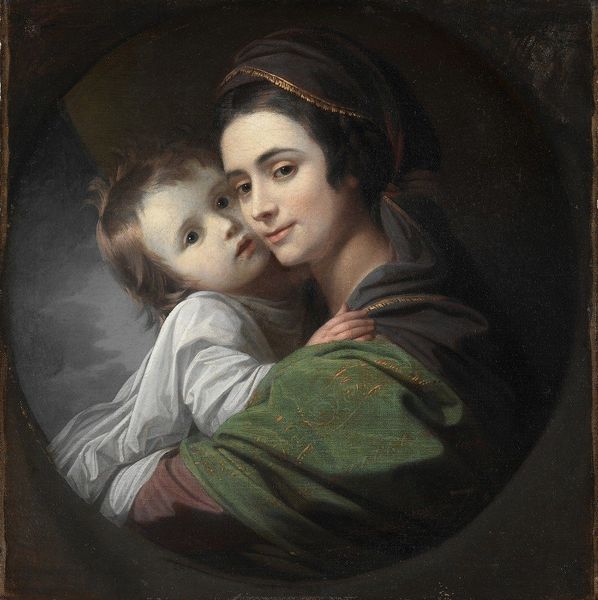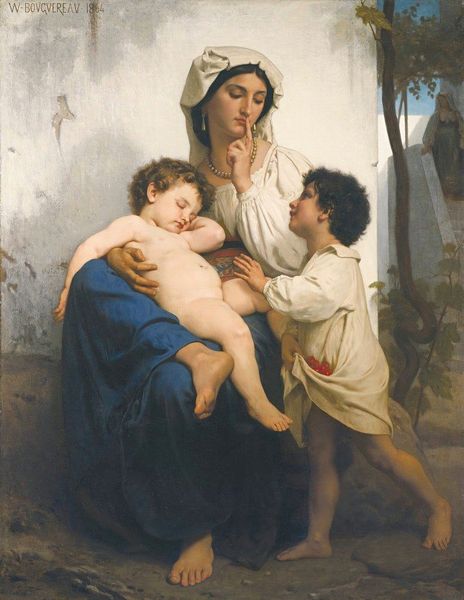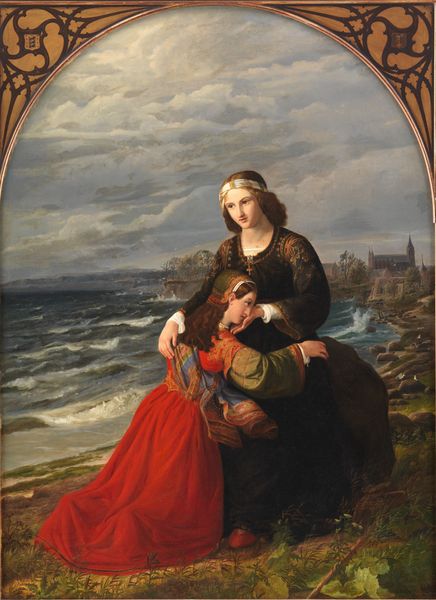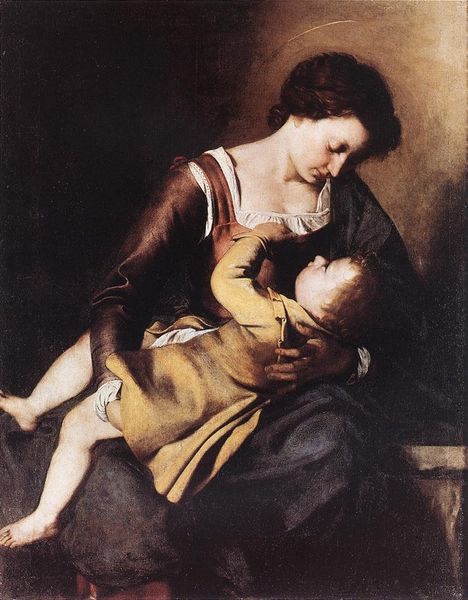
Copyright: Public Domain: Artvee
Editor: This is "The Scarlet Letter," an oil painting by Hugues Merle, completed in 1861. The mood is incredibly somber. She stares directly out at us, a child sleeping in her arms. What do you see in this piece? Curator: Immediately, the color red jumps out—the child’s garment edges, the scarf framing the mother’s face. Red, of course, is loaded. Here, it's less about passion and more about shame and societal judgment, a visible brand. See how it visually connects the mother's emotional state to her visible marker of sin. Editor: So, it’s a symbol meant to isolate? Curator: Indeed. It highlights her ostracization, doesn't it? Her stern, almost confrontational gaze seems to challenge the viewer, daring us to judge her. Consider how that red disrupts the otherwise muted color palette. Does it perhaps serve as a perpetual wound, always visible? Editor: I didn't consider the placement of the color as a symbolic choice. Now I see how it draws your eye directly to what the artist considers most important. Curator: Precisely! Also, think about the narrative itself. A woman branded by society, yet defiantly holding her child. The visual vocabulary reinforces themes of resilience and the enduring bond between mother and child amidst societal cruelty. Notice how that bond visually pushes back against those judging onlookers far off into the background. Editor: It is incredibly powerful how he uses imagery and symbolism to enrich the narrative. I’ll never see the color red the same way again! Curator: It's fascinating, isn't it? The ability of artists to distill complex emotional and cultural ideas into singular, potent images.
Comments
No comments
Be the first to comment and join the conversation on the ultimate creative platform.
